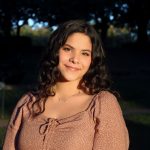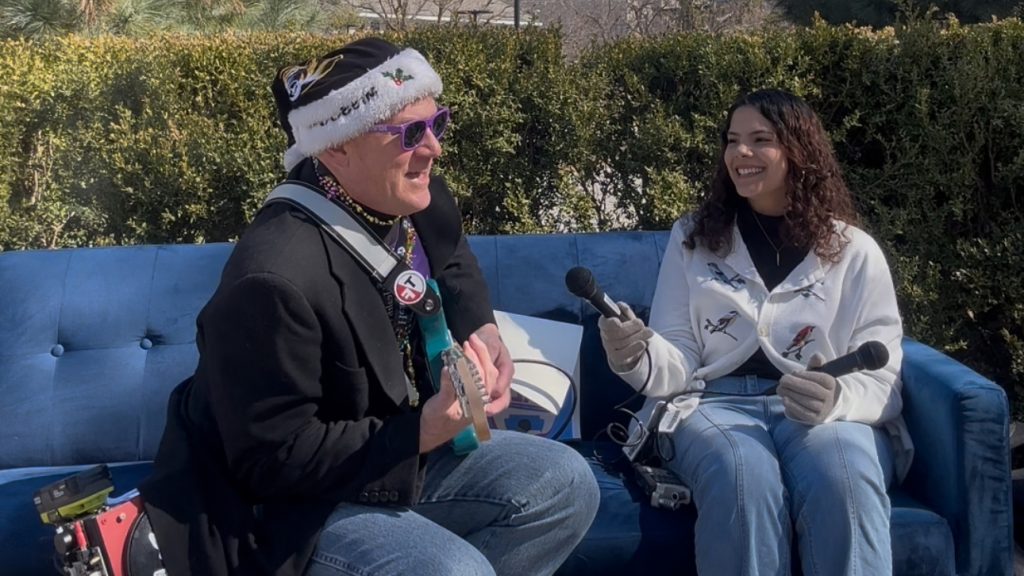
Zoe Saleem, Missouri School of Journalism student, interviews a community member during Couch Talk for Vox Magazine.
Couch Talk: Testing out a new, community-focused vertical video series
Lessons learned from one man-on-the-street video strategy
Combining the magic of viral videos, podcast-style conversations and spontaneous street interviews, we worked with Vox Magazine to launch a new series called Couch Talk.
Taking inspiration from Vox’s casual, conversational reporting style, I added a fun twist: conducting on-the-street interviews from a literal couch. The laid-back setup made the experience feel more relaxed and approachable, helping to build a new kind of relationship with the community while offering a fresh take on street reporting.
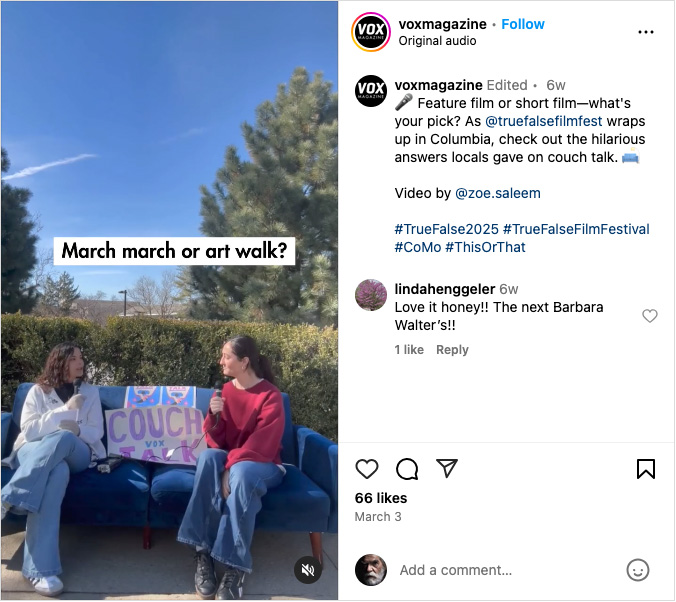
We set up in downtown Columbia, Missouri, to film the first episode of Couch Talk during the True/False Film Festival. We chatted with festival attendees about what they had seen and what they were excited to experience, and then we wrapped up with a “this or that” speed round—asking them to pick between topics like comedy or horror movies.
After posting the first Couch Talk video on Vox Magazine’s Instagram page, it was the highest watched and second highest liked video during their reporting of True/False. It received 1,500 views and 66 likes.
47.7% of accounts reached came from non-followers which aligned with our goal to reach new audiences.
How we made it happen
While moving a couch through downtown Columbia presented its challenges, a clear plan helped ensure the project’s success.
- Creating Graphics: We began by designing the intro and creating the flyer that would eventually be distributed throughout town. The introduction graphic we created was only three seconds long, and included a voice over narration that flowed into the video. The intro and flyer were both created on Canva Pro, which allowed us to use different elements like the couch graphic, microphone and different fonts to fit the style we were looking for. Here’s the template.
- Finding a Location: Before filming, we focused on selecting an ideal spot that would capture the essence of the True/False Film Festival while also drawing attention from passersby. This led us to South Ninth Street, which is right next to the Missouri School of Journalism. We highly recommend finalizing the location before filming begins.
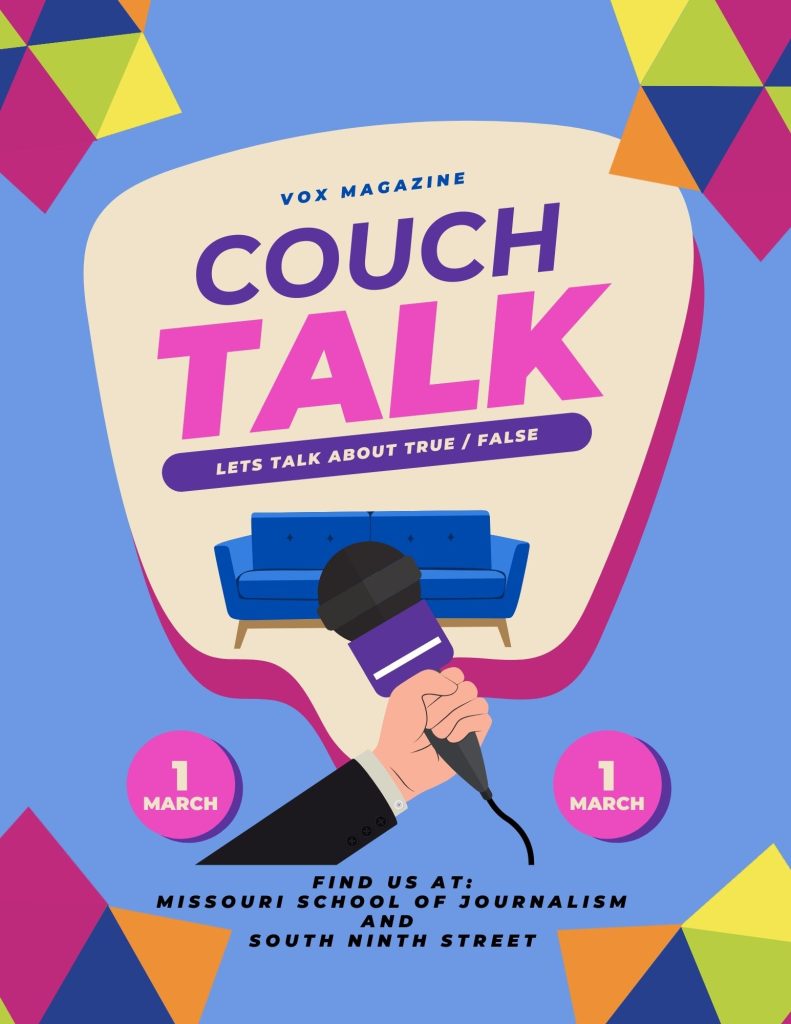
- Promotion: Two days before we filmed, we printed and distributed flyers around town and at the festival to ensure maximum visibility and engagement.
- Testing: The day before filming, our crew gathered to test all the equipment, ensuring everything was properly set up and providing the best possible quality for the shoot.
- Film Day: We started by moving the couch to the designated location and setting up the equipment. That morning, I also created some eye-catching poster signs to hold up on the street, which helped attract the attention of passersby and led to several valuable interviews. The posters and couch caught the attention of many passersby, and they asked what we were filming. We interviewed 12 people.
- Editing: For editing, we used Canva to create graphics, develop the introduction, add text and manage transitions. The footage was then transferred to iMovie for further editing, where we synchronized the audio and video clips. While we used iMovie and Canva, many other editing programs, such as Adobe Premiere Pro, Final Cut Pro and CapCut can also work to achieve similar results.
Supplies
If your newsroom does not have this equipment, you can look to public libraries and other community resources for rentals.
This is what we used:
- Two handheld microphones
- Two XLR cables
- Zoom recorder
- SD card
- Tripod for iPhone or camera
- Couch or other chairs
- Canva for fliers
- Poster signs
To film, we used an iPhone and Canon camera to record, but either one would work fine on their own. We also used zoom recorders to capture the audio separately so that both cameras could use one audio source. If you plan on using one camera, you can attach the microphones to your camera.

Improvements
The biggest challenge we faced was moving the couch. The team borrowed the couch from Vox’s executive editor. With a small team, it was tough to handle it with just two people. For future setups, we highly recommend having at least four people to help move the couch or using moving equipment to make the process quicker and easier.
Engaging with the audience before and after events is crucial. For future episodes, we plan to gather more feedback by reaching out to our viewers, both before and after filming, on Instagram. This will include promoting the event, asking where they’d like us to film and getting their thoughts on the interviews through Instagram story polls, or in the comment section of the video.
Future plans
Vox aims to continue this approach in the future, as it aligns with its mission as a community-focused, city-based magazine. This series offers a fresh way to engage with the local community while increasing our visibility among those who may not yet be familiar with Vox and its work. We envision this becoming a recurring series, tied to major festivals and large events in Columbia. A multi-day shoot would allow us to capture a broad range of interviews, ensuring diversity in both our content and interviewees.
Our next focus is the Unbound Book Festival, which attracts a unique crowd and showcases a different aspect of Columbia.
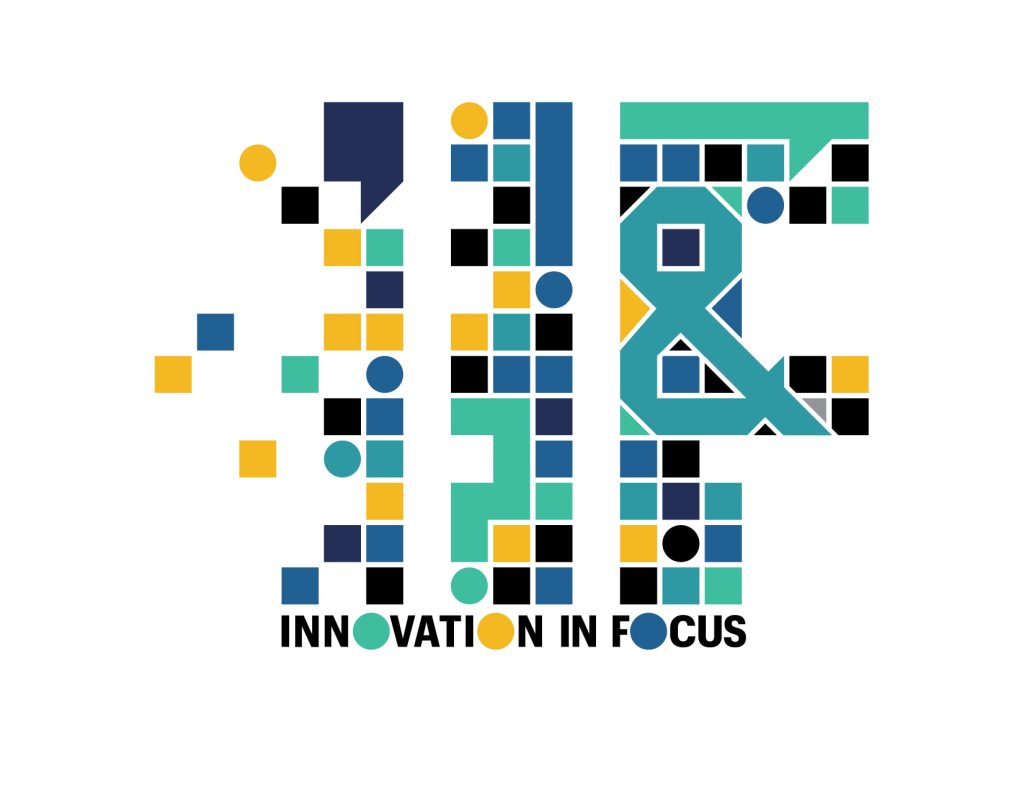
Sign up for the Innovation in Focus Newsletter to get our articles, tips, guides and more in your inbox each month!
Cite this article
Saleem, Zoe (2025, April 17). Couch Talk: Testing out a new, community-focused vertical video series. Reynolds Journalism Institute. Retrieved from: https://rjionline.org/news/couch-talk-testing-out-a-new-community-focused-vertical-video-series/
